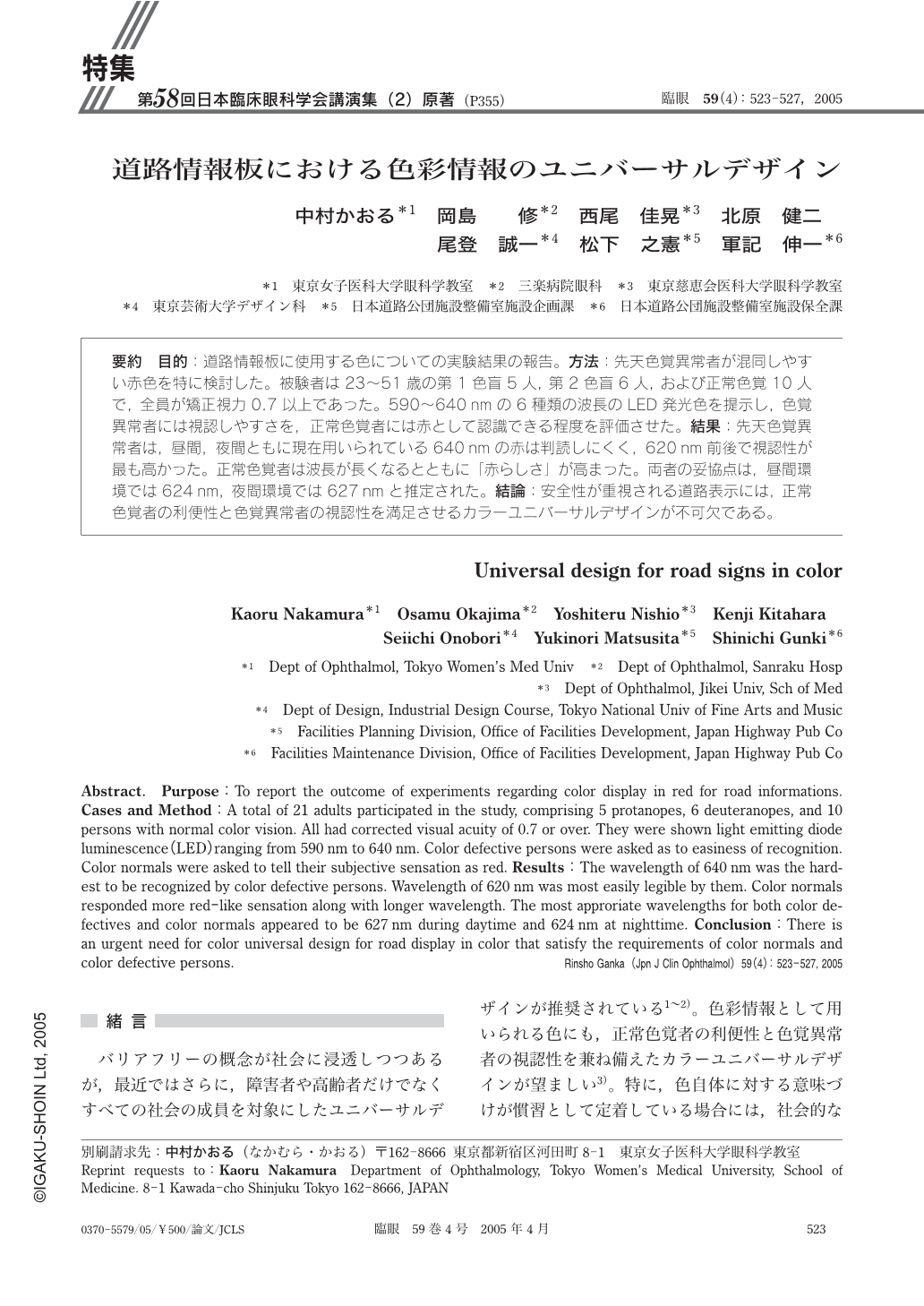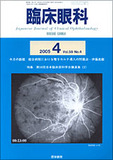Japanese
English
- 有料閲覧
- Abstract 文献概要
- 1ページ目 Look Inside
目的:道路情報板に使用する色についての実験結果の報告。方法:先天色覚異常者が混同しやすい赤色を特に検討した。被験者は23~51歳の第1色盲5人,第2色盲6人,および正常色覚10人で,全員が矯正視力0.7以上であった。590~640nmの6種類の波長のLED発光色を提示し,色覚異常者には視認しやすさを,正常色覚者には赤として認識できる程度を評価させた。結果:先天色覚異常者は,昼間,夜間ともに現在用いられている640nmの赤は判読しにくく,620nm前後で視認性が最も高かった。正常色覚者は波長が長くなるとともに「赤らしさ」が高まった。両者の妥協点は,昼間環境では624nm,夜間環境では627nmと推定された。結論:安全性が重視される道路表示には,正常色覚者の利便性と色覚異常者の視認性を満足させるカラーユニバーサルデザインが不可欠である。
Purpose:To report the outcome of experiments regarding color display in red for road informations. Cases and Method:A total of 21 adults participated in the study,comprising 5 protanopes,6 deuteranopes,and 10 persons with normal color vision. All had corrected visual acuity of 0.7 or over. They were shown light emitting diode luminescence(LED)ranging from 590 nm to 640 nm. Color defective persons were asked as to easiness of recognition. Color normals were asked to tell their subjective sensation as red. Results:The wavelength of 640 nm was the hardest to be recognized by color defective persons. Wavelength of 620 nm was most easily legible by them. Color normals responded more red-like sensation along with longer wavelength. The most approriate wavelengths for both color defectives and color normals appeared to be 627 nm during daytime and 624 nm at nighttime. Conclusion:There is an urgent need for color universal design for road display in color that satisfy the requirements of color normals and color defective persons.

Copyright © 2005, Igaku-Shoin Ltd. All rights reserved.


